
Choosing between OMAD vs ADF may feel like a complicated task. So in this article, I will try to make your life easier and compare is OMAD better than ADF.
OMAD is better than ADF in the short term. After 7-days on OMAD, you’re eating only 7 meals (one meal a day). With the alternative day fast, you eat every other day (3-4 days a week). This means you have 9-12 meals per week. Therefore, you can get better results on omad.
But that’s just the simple calculation. The reality is so much more complex. When you’re choosing the right approach for you, you have to take into consideration your entire lifestyle, eating habits, stress, and environment. So it’s much more complicated.
Difference Between OMAD And ADF
The difference between OMAD and ADF is in the time of the fasting window. On OMAD, you eat just one meal a day, every day. On ADF, you have fasting and feeding days. On the fasting days, you don’t eat for 36-hours, and on feeding days, you normally.
That’s why those two approaches are evenly effective. So it’s really depending on your schedule, lifestyle and hunger tolerance which one is gonna suit your better.
Doesn’t matter if you’re doing one or another, in the long term you will get great results.
Let me quickly start by describing both approaches before I show you how to choose between omad and ADF, so we are on the same page.
Alternate Day Fast (ADF)
Alternate day fast is basically the protocol of intermittent fasting where you eat every other day (source).
For instance, let’s say on Monday you have your regular meals 2-3 times a day. Your last meal should come around evening time. Then you won’t eat until Wednesday morning. Then you repeat the process. It may look something like this one your schedule.
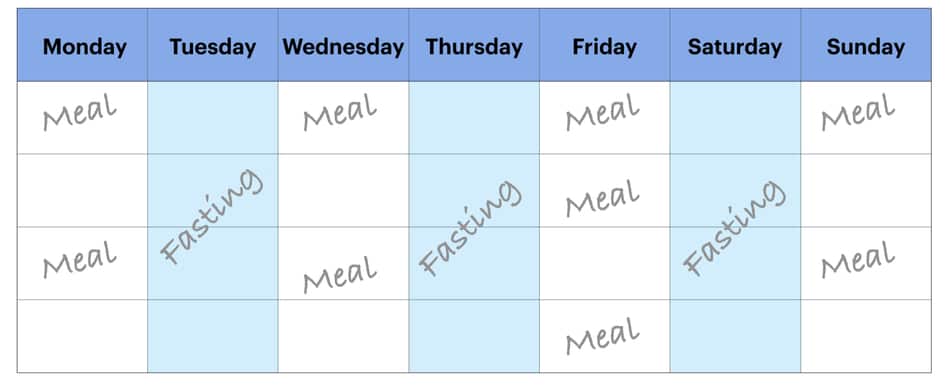
You eat all Wednesday with your last meal somewhere around 8-9 pm, and your next meal won’t be till Friday morning. So it’s more than a 24-hour window without the food. It is even up to 36-hours.
But remember that you don’t need to be a total zealot about it. This means you can have 2 days of the week when you fast. Same days. Every week.
Or even one day. Let’s say Saturday is your fasting day. Or Monday and Friday are your fasting days.
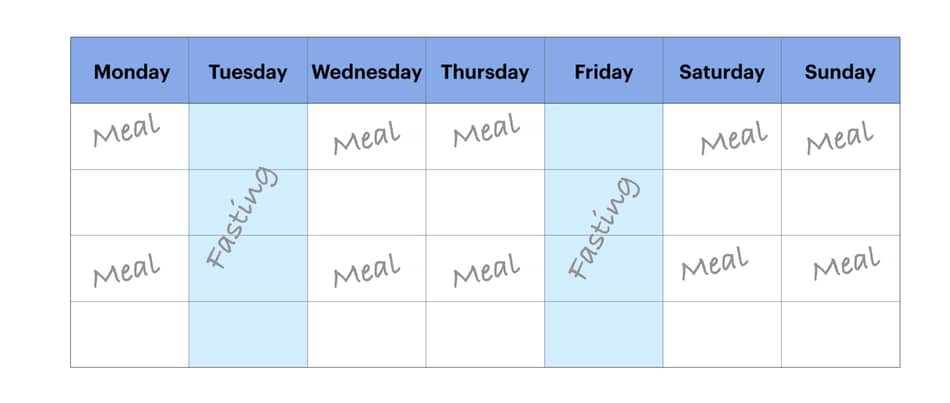
And for the rest of the week, you just enjoy your food. So don’t think of it as either all or nothing. Studies show that as long as you are consistent with it, one day more or less won’t make a huge difference (source).
It will work even for one to two days a week. In fact, this approach is very effective, and many people swear by it. So regardless of which one you pick. The 2-days a week fast or ADF, here are some good tips to keep in mind.
Tips For Alternate Day Fasting
ADF is a great approach for people who already are experienced with intermittent fasting. You know your body very well, and you can predict how not eating will affect it.
You need to have a strong sense of how does the hunger feels. You also want to have a solid understanding of how food (and lack of it) makes you think, act, and feel.
Some people may feel very uncomfortable when they skip just one meal. Not to mention the whole day of eating. So if you haven’t done intermittent fasting before, I would recommend starting from something less intense.
This approach will be good for people who just want to enjoy food for most of the week and are willing to skip 2-3 days of eating. If you’re not sure if that approach is good for you, start from a trail fast.
- Trial fast is a one-day experiment that you don’t eat. So you are not committing yourself to a full week of ADF. Just one day to see how’s that gonna work for you.
- Plan, or adjust your schedule. Try to do fasting days on the days where you have fewer responsibilities. If you have a sales meeting, presentation, or important trip, try to shuffle your fasting day around so that it won’t affect your work.
- Stay hydrated throughout the day. This means you want to drink plenty of water, tea, coffee, and maybe some zero-calorie beverages if necessary.
- Keep the food journal where you write down your thoughts and feelings. This is an easy way to discover how hunger makes you feel. If you notice that you feel lethargic, grumpy, or unable to focus well, write it down. Having this type of journal helps to build self-awareness and make an informative decisions.
- Stay conscious of your thoughts about the food. Oftentimes people think of food as a reward. This leads to over-eating. You will be very hungry, but do not use that as a way to go overboard. Eat normally and stay aware of your thoughts around food.
(if you buy through links on this page, I may earn a small commission).
Also, your last meal shouldn’t be a “topping the tank” experience. Do not think that you should eat more just because you won’t eat for the next day. Just eat normally before and after fast.
One Meal A Day (OMAD)
One meal a day is basically a daily fasting routine where you eat just once a day. That can be either in the morning, afternoon, or evening time.
For instance, let’s say you start OMAD on Monday. And you plan your meal for 4 pm. This means you won’t eat anything until your planned meal. Your fasting starts when you finish your meal and will last till the next day at 4 pm. That comes down to a 23-hour fast, every day. It may look something like this one your schedule.
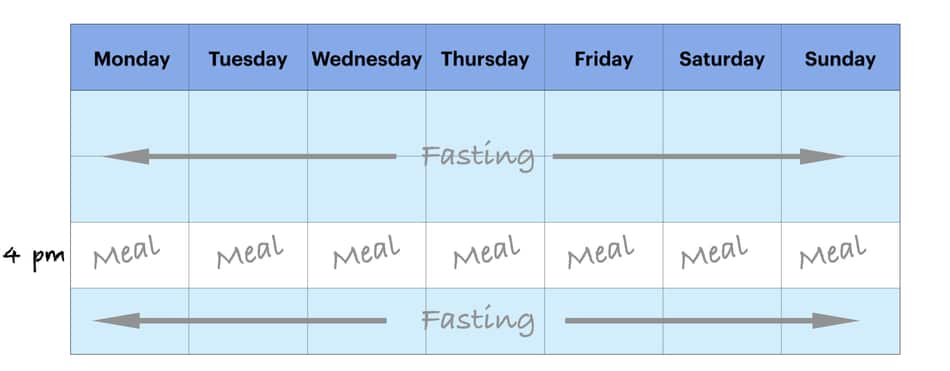
So here you have the example of the same routine every day.
So comparing to ADF, on OMAD you don’t have an entire day of eating, but you eat something every day. I did this approach myself several times because I do prefer to have something to eat daily. Not much, but something.
I just love food so I prefer to eat something. Several studies show that your olfaction and palatability get more sensitive. So your food smell and taste so much better (source).
That’s why I just love to enjoy my meal.
But just like with ADF, you can dedicate only a couple of days a week where you eat one meal a day, and for the rest, you eat normally or slightly less.
That way you can build up your hunger tolerance and get more comfortable with OMAD.
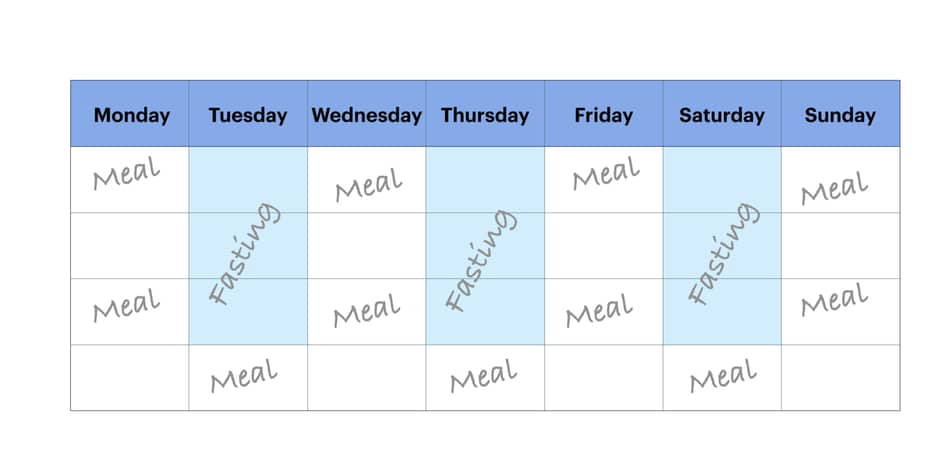
As you can see there are endless ways to plug-in one meal a day to your lifestyle.
If you wanna know more about how does the intermittent fasting affect our senses, in this article I explain exactly how does fasting impact our nasal chemosensory, and why is it that food always tastes better after a long fast.
Tips For One Meal A Day
OMAD is a great approach for people who have a good sense of their hunger and appetite feelings. They can already distinguish physical hunger from emotional hunger, and understand how their own body responds to lack of food.
They know how food is affecting their thinking, feelings, and emotions. They can deal with daily pressure throughout the day without any problems while fasting.
Which is hard at the beginning. But the more you practice, the more you expose yourself to hunger signals you will get more comfortable.
It takes time.
Here are some useful tips you can do to make your OMAD easier.
Keep a food journal. I use a food journal to track what I eat and what I feel throughout the day. This way I could learn more about myself and my reactions to lack of food.
For instance, I learned that I cannot sleep when I’m hungry. And I feel moody when I don’t eat.
I also learned that eating more “fatty meats” makes me more satisfied. This means I’m fuller for longer. So despite the “common wisdom” to keep the meat as lean as possible, I’ve noticed that more fatty cuts make me less hungry.
I simply was writing down in a small journal what I eat and How I feel after I eat that later on.
I also noticed that when I get emotional, I have a tendency to grab food.
That’s how I used to escape from bad emotions. Eating food. But now after using a journal, I know that emotions really come and go, so it’s normal. And it’s shouldn’t really be an excuse to eat.
Choose the best time for your meal. This means you can experiment. Don’t follow any advice from other people when it comes to choosing your mealtime. Explore by yourself.
I personally tried a variety of times and I find that afternoon/evening time is best. I can get my most important work done before mealtime. I also plug in some workouts around 12-1 pm to boost the energy.
I also find that I sleep better when I eat in the afternoon. But that’s me. Your schedule may look completely different. So try for yourself.
Eat slowly. There are several benefits to eating slowly. Apart from stretching your satiety, it also improves your digestion. After 23-hours of not eating people may have a tendency to gobble on their food because they feel like they’re starving.
The beauty of OMAD and eating slowly is that real food just tastes so much better. And unfortunately, junk food tastes like crap when you eat it slowly. It’s really disappointing.
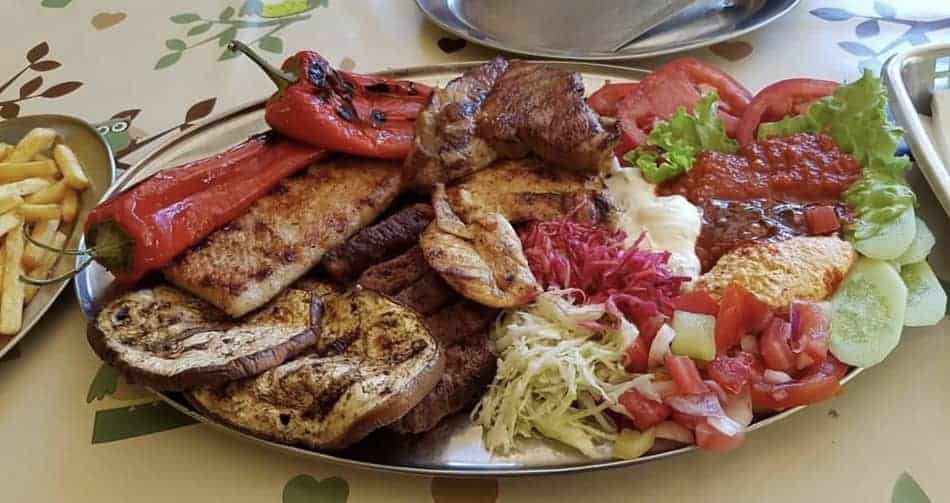
How To Choose Between OMAD and ADF?
To choose between OMAD and ADF you need to know which one will fit better into your lifestyle. Technically, OMAD will get better results in the short term. But in the long-term, ADF may seem to be easier to sustain.
But that’s just my opinion. They both work. And the only way for you to really find out which one is better for you, you have to practice on yourself. This means just trying each of them for a week, and you will be able to determine what it’s better for you to stick to.
Because you want to make sure you’re getting the best results. And you don’t want to waste your time.
And then the next week you would repeat the process, but you will end up with 4 days of fasting, and 3 days of eating.
Remember that on ADF you need to have a strong hunger tolerance, and strong self-awareness to sustain 36-hours without food. Which can be tough for most people. On the other hand, OMAD is not easy for the long haul. Unless you reduce fasting days.
Take Away
One thing I can guarantee you that regardless of what intermittent fasting protocol you choose, OMAD or ADF, you will get results.
They both work. Doesn’t matter how you cut it. They both will drive you towards the caloric deficit. So at the end of the day, it’s all about which one will fit into your lifestyle.
